
Hollywood Bulking Transformations ARE Realistic for Skinny Guys
There are a ton of articles talking about how Hollywood body transformations are unrealistic. There’s some truth in that. Most guys are overweight. For them, even just dieting down to a healthy body-fat percentage can be surprisingly difficult.
Most Hollywood transformations are coming at it from the other side, though. From the naturally skinny side. From our side. These actors aren’t losing a dramatic amount of fat, they’re building an impressive amount of muscle, and they’re doing it suspiciously fast.
Many of us can do that, too.
Let’s dive into it.
- Video Version
- Realistic vs Unrealistic Physiques
- Modern Hollywood Physiques & Transformations
- Do Actors Have Good Muscle-Building Genetics?
- Are Hollywood Actors Abusing Steroids?
- How Hollywood Actors Look in Real Life
- How Can We Know for Sure What’s Real?
- Hollywood Training Secrets?
- Skinny Actors Who Bulked Up
- Summary
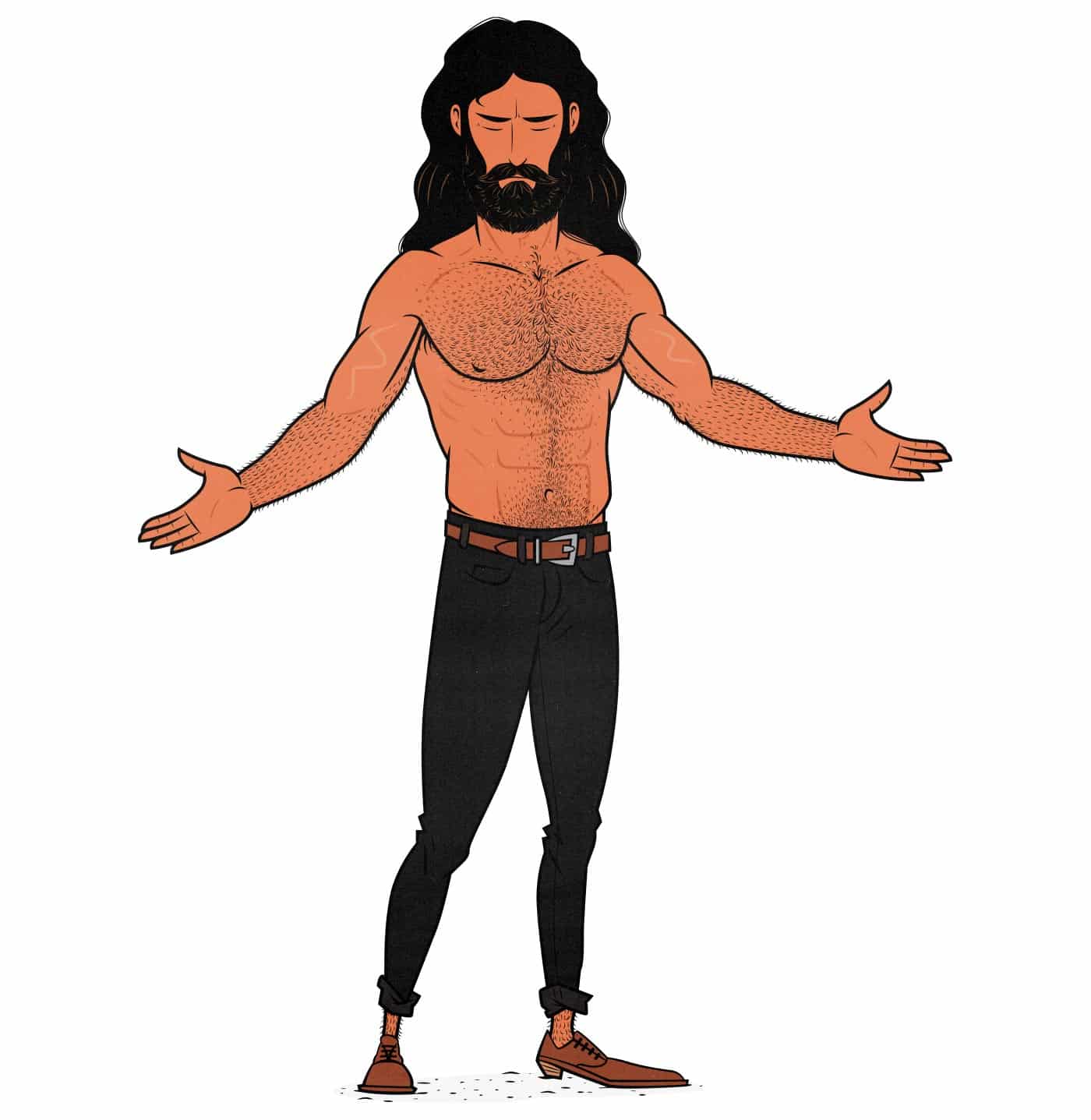
Video Version
If you’d rather watch than read, we’ve got a video about Hollywood bulking transformations:
Realistic vs Unrealistic Physiques
I’m all for having realistic bulking expectations. Not because I’m trying to be a downer, but because most of us can make incredible progress. Our bodies respond powerfully to the stimulus of hypertrophy training when we combine it with a good bulking diet and a healthy lifestyle. Realistic expectations are inspiring.
On the other hand, when I started bulking up ten years ago, it was pretty common for guys to be inspired by bodybuilders and action heroes like Arnold Schwarzenegger and Sylvester Stallone. Marco was one of those guys. He bought Arnold’s New Encyclopaedia of Modern Bodybuilding with the hope that within a couple of years, he’d look like the Terminator. That didn’t happen.
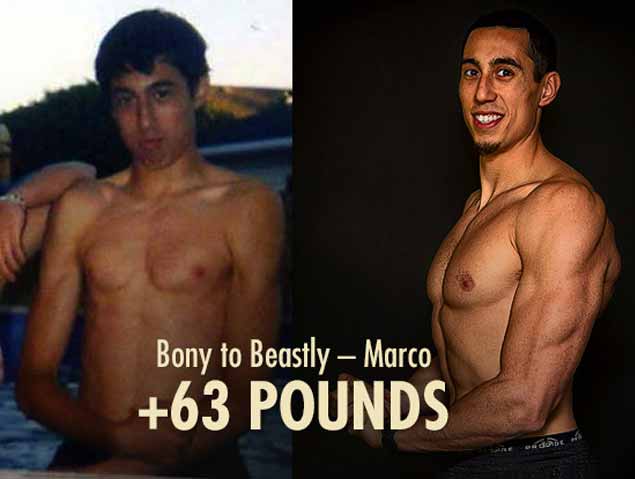
He did succeed at bulking up, though. While getting his degree in Health Sciences (BHS), he gained over sixty pounds and was hired to help his university football team bulk up. After graduating, he landed an internship with Eric Cressey, the head strength coach for the New York Yankees. And then he went on to train a slew of professional and Olympic athletes. His lofty inspirations were forgotten, replaced by newer, more realistic ones.
Given the choice, though, I think it’s better to have realistic expectations from the outset. That way you get the experience of setting short-term goals, accomplishing them, and then setting new goals. That way you have a series of successes instead of forever falling short of your initial goals. That’s why I think it’s so important to talk about realistic rates of muscle growth and realistic physique expectations.
Modern Hollywood Physiques & Transformations
Nowadays, people are looking at action heroes like the Rock and Chris Hemsworth. Most people can’t look like them. Even with a decade of disciplined training and steroid abuse, these physiques are out of reach for most of us. Thing is, these physiques are out of reach for most Hollywood actors, too. Of all the big action heroes, nobody is as big as the Rock. Of all the superheroes, nobody has arms like Chris Hemsworth. There are always outliers. These are the outliers.
Also, keep in mind that the more muscular actors like Chris Hemsworth, The Rock, Jason Mamoa, Ryan Reynolds, and Justin Baldoni have been training for decades. These aren’t the “skinny to muscular” transformations that make headlines. These aren’t the guys gaining 20–30 pounds in 3–9 months for a role as a sexy love interest, athlete, or action hero. These guys built their physiques by living good lifestyles and gradually building muscle over many years.
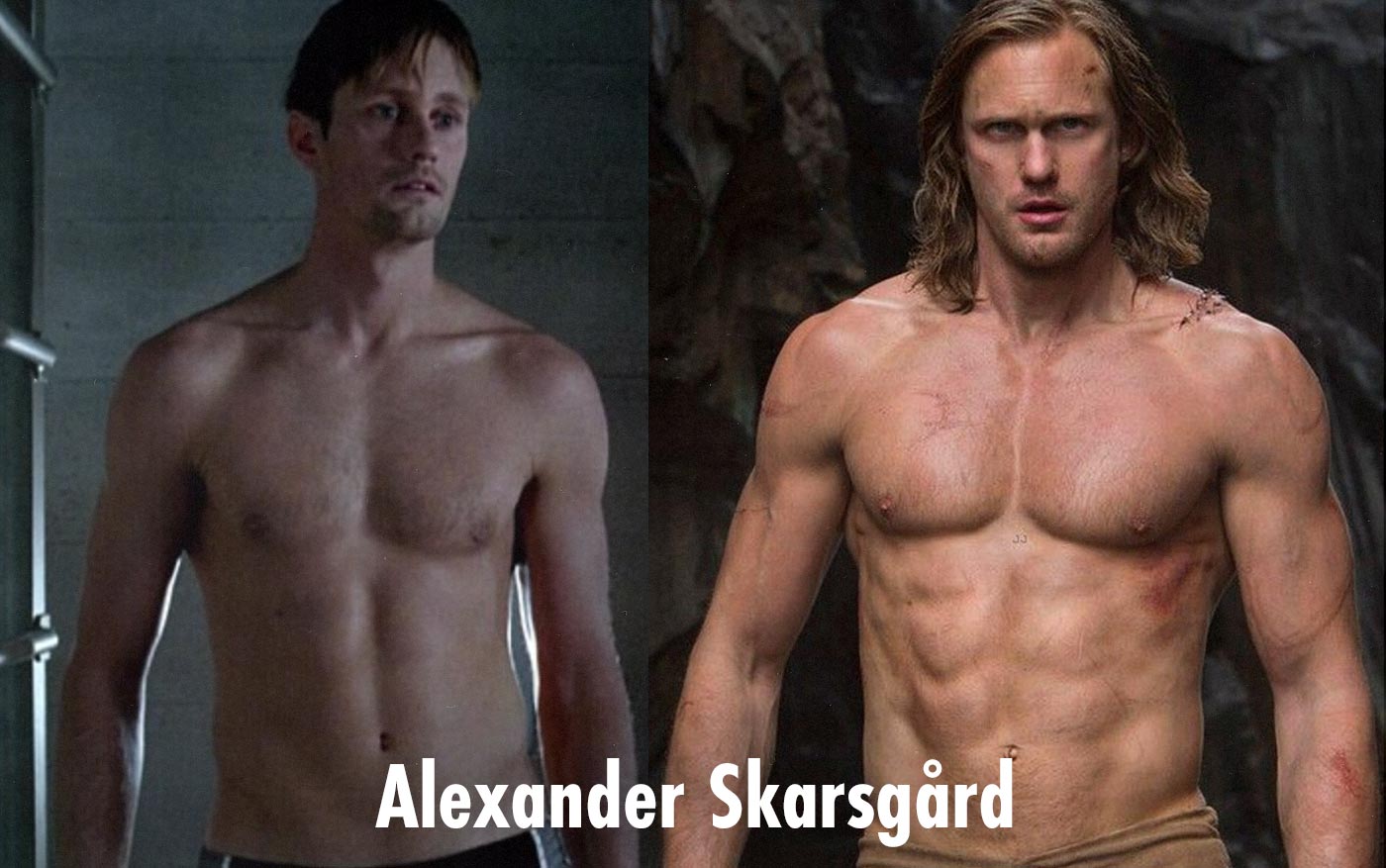
The short-term transformations are coming from thinner guys. Think of Christian Bale bulking up for Batman, Joseph Gordon-Levitt bulking up for Don Jon, Will Poulter bulking up for Guardians of the Galaxy, Michael B Jordan bulking up for Black Panther, Ryan Gosling bulking up for Crazy, Stupid, Love, Jake Gyllenhaal bulking up for Southpaw, Brad Pitt bulking up for Fight Club and then Troy, or Alexander Skarsgård bulking up for Tarzan and then The Northman.
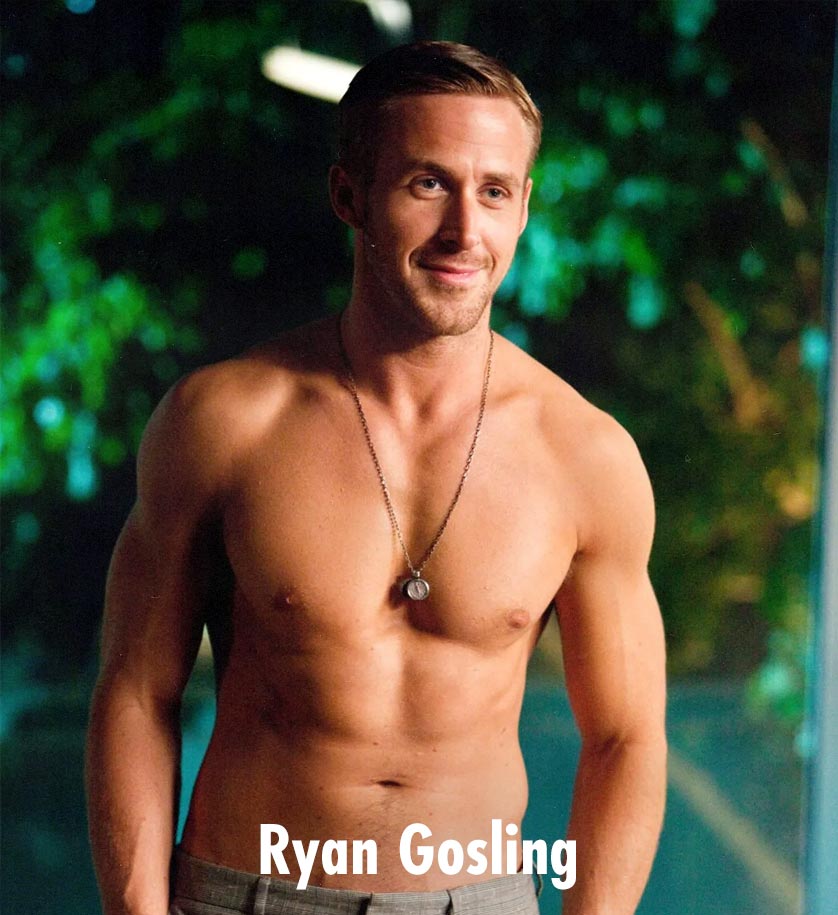
These are naturally skinny actors packing on 20+ pounds of muscle within a few months. They’re doing a bulking challenge, where they do everything they can to gain as much muscle as possible in a short period of time.
We can do that, too.
Do Actors Have Good Muscle-Building Genetics?
Some actors are selected because they’re impressively muscular. That includes guys like Arnold Schwarzenegger, Sylvester Stallone, John Cena, and, of course, the Rock. They were bodybuilders first, actors second. These guys are selected at least in part because of their muscle-building genetics, long training history, and drug abuse.

These actors are a minority, though. They always will be. Guys that look like they take steroids don’t have as much mass appeal as guys who look healthier and more athletic. Women prefer guys with muscles like Ryan Gosling, not the Rock. Even in superhero movies marketed to men, most of the superheroes look at least somewhat natural. That includes Batman, Spiderman, Iron Man, Homelander, and even Superman. They look like athletes, not drug-addled bodybuilders.
When choosing actors to play these roles, directors are looking at how famous they are, how well they suit the role, their acting ability, connections, good looks, and charisma. The thinner actors aren’t at a big disadvantage here. Many of them land these roles before they’ve even lifted their first dumbbell. Like us, their muscle-building genetics are a role of the dice.
It’s well-known that no matter how skinny an actor starts out, he can succeed at building muscle. There’s total faith in their ability to transform. They put in the work, their bodies adapt to the stress, and they gradually build muscle. Their genetics determine exactly how much muscle they build and how that muscle looks, but they all wind up looking strong, fit, healthy, and athletic. They all wind up looking good.
Are Hollywood Actors Abusing Steroids?
For every actor who uses PEDs, there are others who build iconic physiques in a more natural and realistic way. The same thing is true at our local gyms. Something like 5–20% of guys who lift weights use steroids. That sounds like a lot. It is a lot. But remember that 80–95% of guys aren’t using steroids, and that most of them look unfavourably on the guys who do.
Most guys want to improve both their appearance and health with their exercise and diet routines. Most guys aren’t interested in getting hooked on drugs they might wind up stuck on for life. They aren’t interested in managing the side effects—gynecomastia, balding, acne, depression, high blood pressure, poor blood lipids, liver damage, and brain damage—with an ever-expanding cocktail of other drugs. And perhaps most of all, most guys don’t even want to look like they take steroids. Most guys aren’t trying to look like the Rock.
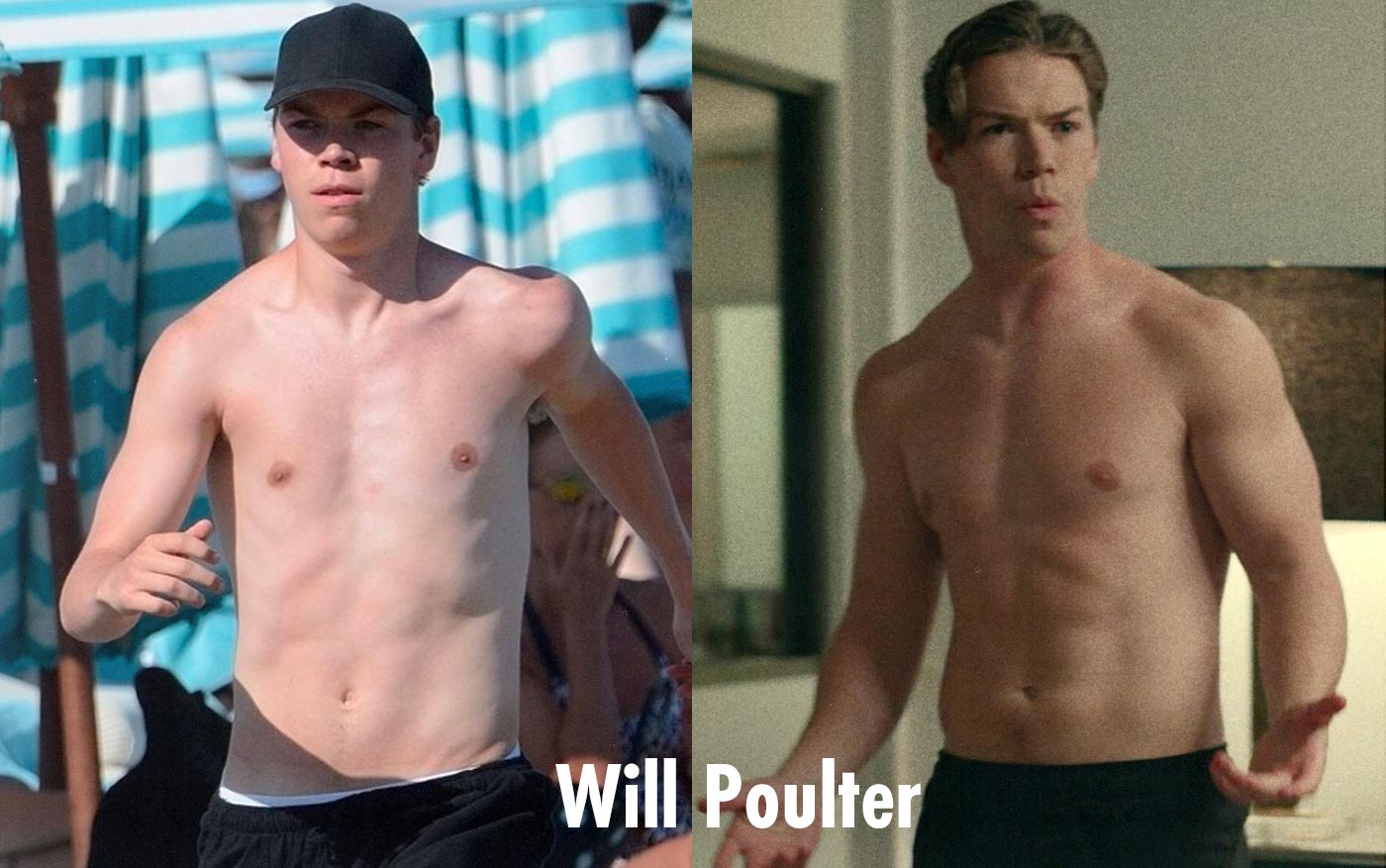
You could take a cynical view and assume that all actors use drugs to bulk up. After all, they’re highly motivated to have an impressive transformation. They have money. They have connections. And they can monitor their health with a doctor. But keep in mind that even allegations of steroid abuse aren’t a good thing.
Also, remember that most of these actors are performing art geeks with acting degrees. Marco and I both have fine arts degrees. I have a degree in design. Marco went back to university to get an acting degree. Our entire social circles are full of artists, actors, and film geeks. If you hang out in these crowds, you know these guys are more likely to take mushrooms and go to Burning Man than to take steroids. These guys see steroids as being incredibly stupid, vain, and unhealthy. These aren’t aspiring bodybuilders or powerlifters. It’s not a steroid culture.
How Hollywood Actors Look in Real Life
Most people forget that how an actor looks in a movie scene isn’t quite how they look in real life. They’re wearing makeup, they’ve just finished pumping up their arms and shoulders, they’re flexing their abs, the lighting is designed to highlight their muscles, and the camera angles are optimized to make them look more impressive.

When you look at these actors in real life, they look rather different. They still look fit and athletic. They’re still in great shape. They still look great. But they look far more normal. It becomes clear they aren’t a different species using experimental methods and drugs to get never-before-seen bulking results. Their results look just like our results. We can look like they look.

The same goes for posture. We’re so used to seeing people posing that we forget what a relaxed posture looks like. It’s normal for your waist to expand when you’re full, when you breathe, or when you relax. It’s normal to get some rolls in your stomach when you sit. That’s true for everyone, including actors. We just don’t tend to ever see them in more relaxed positions. Not unless we go looking for paparazzi photos.

So the catch is, if you want your physique to look like it’s in a Hollywood movie, you need to pump up, put on makeup, take the perfect selfie, and then apply a few filters. The underlying body is realistic, but there’s a ton of finesse that goes into making it look just right on camera.
How Can We Know for Sure What’s Real?
We can never know for sure what anyone else is doing. It’s possible that any given actor has surprisingly good muscle-building genetics or is secretly abusing PEDs. It’s possible that the Rock is natural and got his results from having one-in-a-million genetics. It’s also possible that some actors with unimpressive physiques are abusing drugs. I can’t tell you what any of these guys are doing. Nobody can.

What I can tell you for sure, though, is what’s realistic. I’ve bulked up. I helped my roommate bulk up. I’ve helped friends and family members bulk up. Marco has helped all kinds of regular people and professional athletes bulk up. And perhaps most of all, in the past decade of running this business, we’ve helped thousands of everyday skinny guys bulk up. We know exactly what’s possible for people like us.

When I look at most of these Hollywood transformations, they look like what we’ve accomplished ourselves. They look like the results our clients get. Whether these actors are natural or not doesn’t matter because we know you can get similar results naturally.
Hollywood Training Secrets?
Hollywood actors have advantages: they have help making their meals, they work out with personal trainers, and they’re highly motivated. They weren’t following a better workout program or diet than you can follow, though. We know this because some of them are totally open about their workout programming and diet advice.
To be honest, most of their workout programs and diets aren’t particularly great. It’s not that they’re bad, it’s just that many top-level natural bodybuilders, powerlifters, and athletes train and eat quite a bit better. You have access to better workout routines and diets than they do.
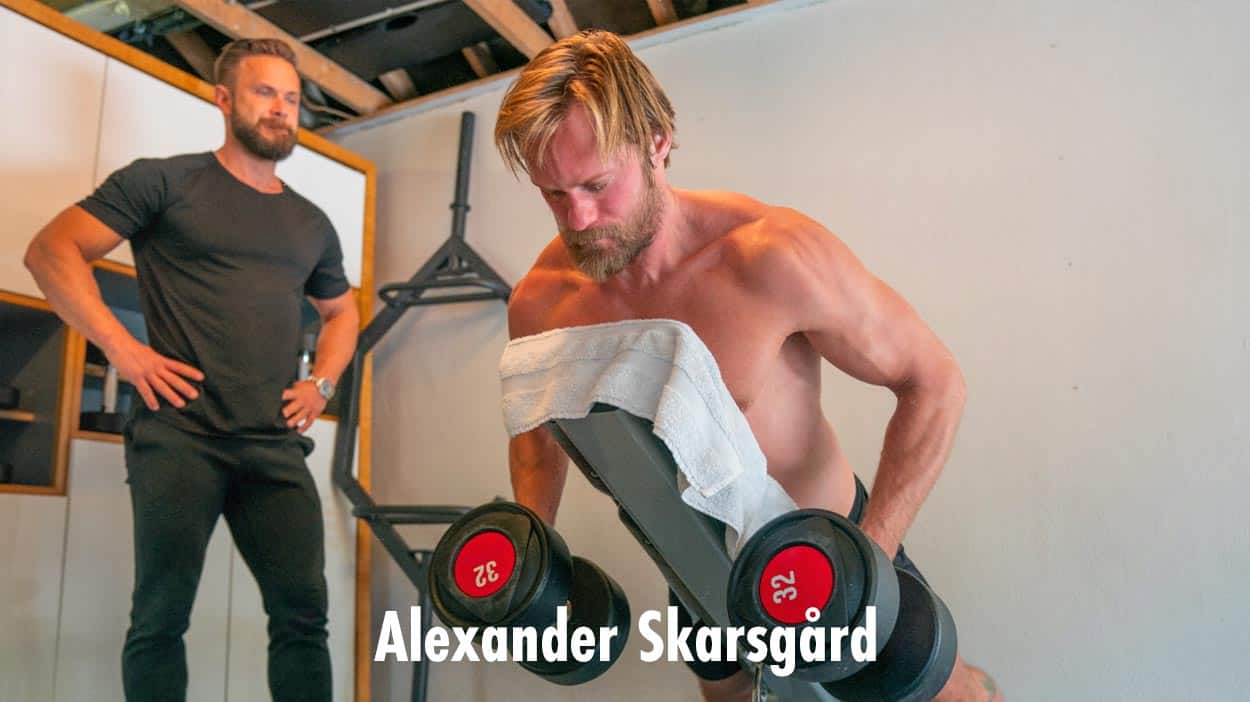
Our programs are highly influenced by the programs that Marco used to help professional athletes bulk up. He learned a lot of these methods from trainers like Eric Cressey, the head strength coach for the New York Yankees. These are the best trainers in the world. There are no special secrets. The best trainers know how to program well, they know how to tailor a program to an individual and their goals, and they know how to work through problems—tendinitis, too much/little soreness, lagging muscles, over-eager muscles, and so on. The methods are good but they aren’t magic.
Also, remember that many of these actors are splitting their energy between hypertrophy training and skill-specific training for their movie roles. Alexandre Skarsgård can’t just lift weights, he also needs to practice swinging a sword, often for several hours per day. You don’t need to do that (although it would be cool if you did).
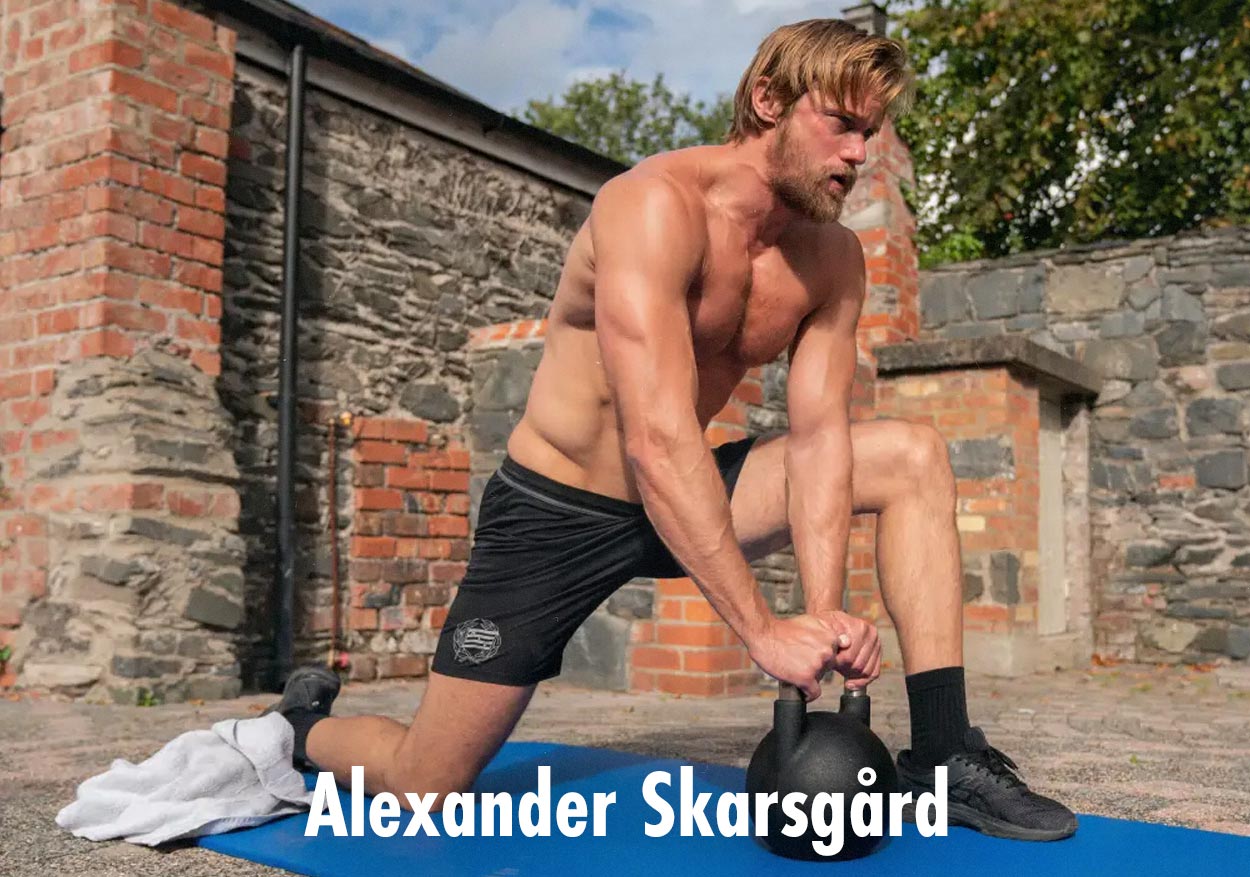
There’s only one real “secret,” and you may already know it. Most athletes need upper-body strength, but they also need to be able to sprint fast, jump high, and generate force with their lower bodies. That’s especially true if we’re talking about soccer players, American football players, and rugby players. Less true if we’re talking about fighters and gymnasts. The reason Hollywood actors are able to get more visually impressive results is that they’re less concerned with athleticism and more concerned with aesthetics.
Most of these actors are prioritizing the muscles that have the most dramatic impact on their appearance. They’re doing plenty of push-ups, bench presses, overhead pressing, chin-ups, pulldowns, rows, biceps curls, triceps extensions, and lateral raises. Oftentimes there’s extra core work to strengthen the abs, obliques, and posture. Some actors will even bulk up their necks, especially if they’re portraying hand-to-hand fighters. They’re doing fewer sets of squats and deadlifts. They aren’t ever doing hip thrusts, leg extensions, or leg curls.
For better and worse, most actors prioritize upper-body hypertrophy over everything else. You can do that, too, if you want.
Skinny Actors Who Bulked Up
Think of Robert Pattinson getting in shape for Batman, Brad Pitt for Fight Club, Joseph Gordon-Levitt for Don Jon, Alexander Skarsgård for the Northman, or Tom Holland for Spiderman. All of them started off relatively untrained, they bulked up for a few months, filmed their movies… and then stopped lifting weights. If you keep lifting weights, you can go much further than they did.

What’s cool about these actors is that you get an idea of what you can accomplish in a short period of time if you know what you’re doing, follow the plan, and put in enough focused effort.
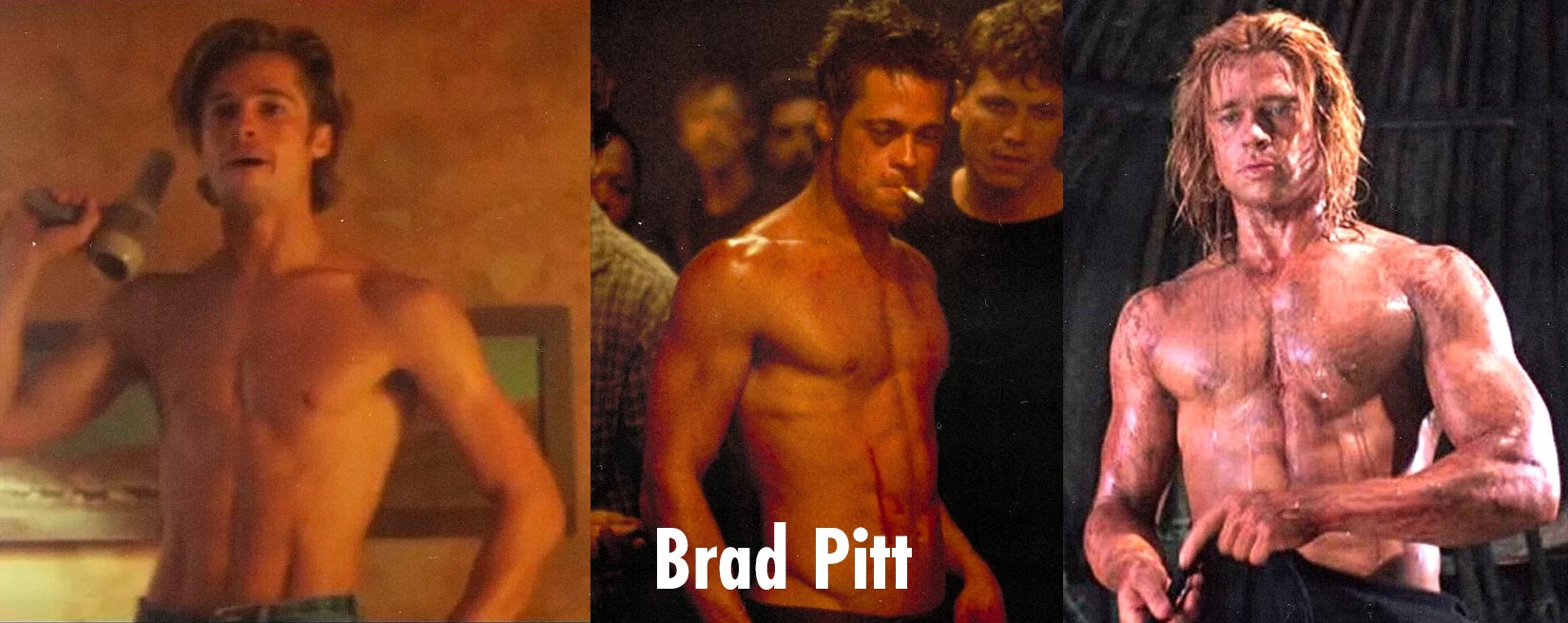
After bulking up for a few months, regardless of their genetics, they all got into killer shape. They don’t look similar to one another, though. They all look great, but they all look different. You’ll look different, too. We all have different bone structures, tendon insertions, and muscle belly shapes.
The trick is to worry less about the underlying structure of your body, and more about building muscle in the areas you want to build it. Everyone looks great when they get into shape. Different, but great.
Summary
The Hollywood actors who have the best bulking transformations follow a good hypertrophy training program, they emphasize their upper bodies, they eat good bulking diets, and they lead healthy lifestyles. They’re doing things correctly, but their genetics aren’t better than yours, and there are no magic secrets to their methods. You can get comparable results.

One of the reasons these actors are able to get such reliable results is that they consult with experts, allowing them to bulk with the wisdom of far more advanced lifters. Lifting weights is a whole hobby with its own unique learning curve. The same is true with diet and lifestyle. That’s why the people who get the best results are often the ones who follow a program, hire a trainer, or get the help of a mentor. Most of this information is available for free, too. You don’t need help. Just keep in mind that if you’re doing it by yourself, it will probably take you at least a little bit longer. And that’s totally fine.
The good news is that if you adopt lifting as a lifestyle, and you stick with it for years, you’ll reap the long-term health benefits, and you’ll be able to push your results much further. You’ll become a master of this hobby. Things that seem impossibly difficult now will become your casual routine. You can gain another ten, twenty, or maybe even fifty pounds. You can get leaner, bring up lagging body parts, and develop your strong points. You can go much further than a lot of these actors do.

Alright, that’s it for now. If you want more muscle-building information, we have a free bulking newsletter for skinny guys. If you want a full foundational bulking program, including a 5-month full-body workout routine, a diet guide, online coaching, and a recipe book, check out our Bony to Beastly Bulking Program. Or, if you want a customizable intermediate bulking program, check out our Outlift Program.


Muscle-Building Mini-Course via EMAIL
Sign up for our 5-part muscle-building mini-course that covers everything you need to know about:
Here are some related articles